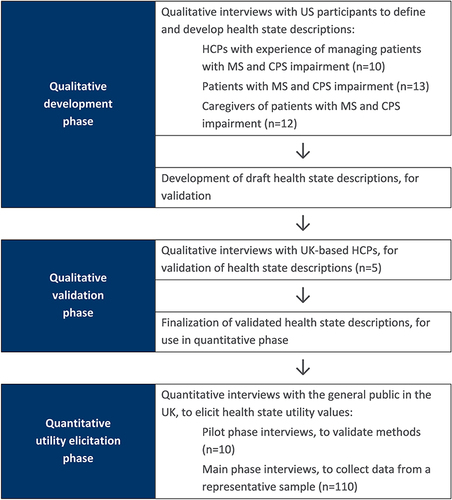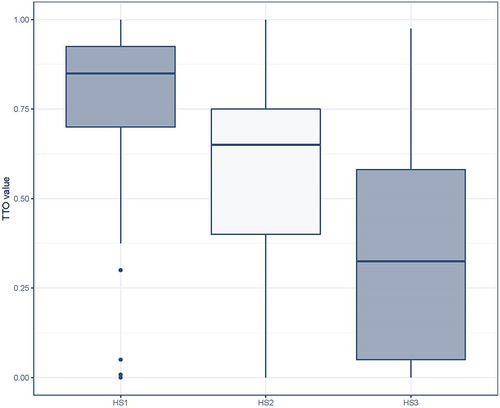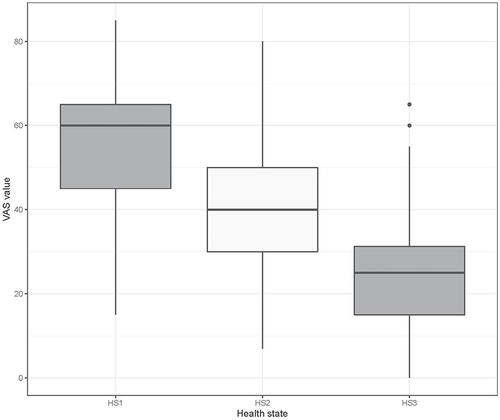Figures & data
Figure 1 Overview flow chart of qualitative and quantitative study activities.

Table 1 Advantages and Disadvantages of Potential Approaches Considered for Generation of Health State Utility Values
Table 2 Health State Definitions (as per Qualitative HCP Insights, Normative SDMT Data, and UK Observational Data in MS)
Table 3 Demographic Characteristics of Participants in TTO Interviews (n=120) and UK Public
Table 4 TTO Utility Value per Health State
Figure 2 TTO utility value per health state (n=120 responses to each). HS1, “mild CPS impairment”: SDMT 43-40 (indicating deficit of ≥22% versus average for a population aged ~55 who are predominantly women; deficit of ≥26% versus average for a population aged ~40); HS2, “moderate CPS impairment”: SDMT 39-32 (indicating deficit of ≥29% versus average for a population aged ~55; who are predominantly women; deficit of ≥33% versus average for a population aged ~40); HS3, “severe CPS impairment”: SDMT ≤31 (indicating deficit of ≥44% versus average for a population aged ~55 who are predominantly women; deficit of ≥47% versus average for a population aged ~40).

Table 5 VAS Score per Health State
Figure 3 VAS score per health state (n=120 responses to each). HS1, “mild CPS impairment”: SDMT 43-40 (indicating deficit of ≥22% versus average for a population aged ~55 who are predominantly women; deficit of ≥26% versus average for a population aged ~40); HS2, “moderate CPS impairment”: SDMT 39-32 (indicating deficit of ≥29% versus average for a population aged ~55; who are predominantly women; deficit of ≥33% versus average for a population aged ~40); HS3, “severe CPS impairment”: SDMT ≤31 (indicating deficit of ≥44% versus average for a population aged ~55 who are predominantly women; deficit of ≥47% versus average for a population aged ~40).

